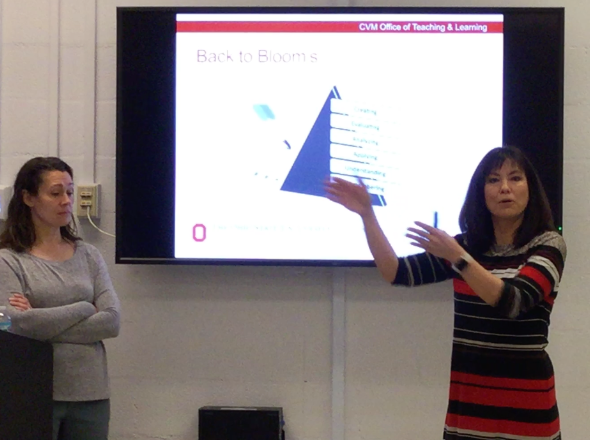The annual Canvas conference, InstructureCon (nicknamed “InstructureCarn” this year … as in carnival), took place from July 24th to 26th. Here are some of the new features and enhancements announced that I am most excited about, some of which have already been rolled out:
- Available Now
- Duplicate entire modules – This has made my workflow significantly more efficient in some cases!
- SpeedGrader Enhancements including image annotation and comments showing on the same page as source location.
- Non-scoring rubrics – This is a great feature for mastery-based marking, helping students focus on feedback rather than point values
- App page view reporting – With all of your pre-clinical students having iPads, this helps with getting more accurate information on the usage of your course resources.
- Anonymous & Moderated Grading – Did you know that
- Coming Soon
- Aug 4th Release:
- Student Planner / Dashboard List View – This view puts deadlines and to do items front-and-center for students; this view also allows students to add their own to do items! Look out for an update on this from Teaching and Learning soon after release.

- Assigning Pages and Ungraded Discussions to student to do – You’ve been able to set module requirements for students to view your content pages; now you can set due dates and help your students remind themselves by putting them on their Planner.
- Student Planner / Dashboard List View – This view puts deadlines and to do items front-and-center for students; this view also allows students to add their own to do items! Look out for an update on this from Teaching and Learning soon after release.
- SP19 / Now in beta:
- New Gradebook: This is a redesigned gradebook with additional functionality and a cleaner interface – faster, more informative, easier to customize view and make quick adjustments, and so on. In addition, you are able to set automatically-calculated late and missing assignment policies with the New Gradebook. Let Teaching and Learning know if you would like to explore the new gradebook in your courses!

- New Gradebook: This is a redesigned gradebook with additional functionality and a cleaner interface – faster, more informative, easier to customize view and make quick adjustments, and so on. In addition, you are able to set automatically-calculated late and missing assignment policies with the New Gradebook. Let Teaching and Learning know if you would like to explore the new gradebook in your courses!
- Aug 4th Release:
- In Development
- Analytics 2 with “interactive and actionable charts.”
- Quizzes.Next – This is a completely redesigned quizzing tool that will come with a new experience as well as additional question and stimulus types. I’m most excited about additional capabilities in question bank management and sharing, as well as ability to tag outcomes to individual questions!
- More information forthcoming – Rich Content Editor drag and drop, SpeedGrader screen recorder, etc..



